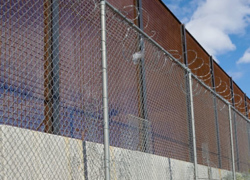Challenging Stereotypes about Latin America
It is important to overcome two stereotypes about Latin America and the Caribbean that are all too common in the United States. One is an excessively optimistic view of the region, often a result of projecting U.S. ideology and experience, combined with wishful thinking. The other is an excessively bleak vision of the region, often grounded in notions of U.S. superiority.
The optimistic view heralds the supposed convergence of Latin America with the United States. This view asserts that (except for Cuba) Latin America has become an entirely democratic region; welcomes Latin America’s embrace of market reforms and economic liberalization; and calls for broad inter-American partnerships on trade and in the “wars” against terrorism and narcotics. This vision emerged from the Miami Summit of the Americas in 1994, when the assembled president and prime ministers from all the countries of the Western Hemisphere save Cuba proclaimed their shared commitment to a Free Trade Area of the Americas (FTAA) by 2005.
All along, however, there was much less to the Miami vision than met the eye. The extent and depth of Latin American commitment to hemispheric free trade was exaggerated, as was the U.S. resolve to overcome its own protectionism. 2005 came and went without any agreement, and the FTAA project has since disappeared.
Although the preference of Latin Americans for democracy continues, and almost all countries in the region now hold free and fair elections, strong and separate legislative and judicial institutions and an independent free press, all capable of checking executive power, are weak not only in Cuba but in Venezuela, Bolivia, Nicaragua and Ecuador, and they are challenged in several other countries. The satisfaction about the spread of democracy in the Americas has to be tempered by a realistic awareness of the many ongoing obstacles to effective democratic governance, especially in the countries where large, historically excluded indigenous populations need to be incorporated.
A related need is to recognize that free markets are not by themselves the solution to all problems. Contrary to frequent assertions, Chile’s success at achieving both economic growth and effective democratic governance does not demonstrate that freeing markets and dismantling the state is all that is needed. Chile’s success actually demonstrates the value of pragmatically combining market reforms with vigorous state action, not of embracing market fundamentalism. Throughout the region, countries are trying to focus and strengthen the state’s competence, not to weaken it; to correct the consequences of the market by concerted public policies; and to find effective ways to tackle poverty, inequity and exclusion. Ironically, the financial and economic crisis the United States has faced since 2008 should make it easier for many in Washington to understand why more active and capable governments are needed in Latin America.
It is equally important to overcome the opposite tendency: to dismiss Latin America as a backwater region. Latin America is frequently depicted as a region of unmotivated workers, business leaders who prefer rent-seeking to entrepreneurial creativity, and of demagogic politicians—as a region held back by entrenched privilege and cursed by rampant corruption. These stereotypes are all too widespread: despite the industriousness of Sao Paulo’s workers, the global world-class competitiveness of Chile’s niche sectors, Argentina’s modern agriculture, and the many hard-working immigrants to the United States who come from Mexico, the Caribbean and Central America. They persist despite such globally competitive multinational companies as Embraer, Gerdao, CVRD, Odebrecht and Cemex; and despite such outstanding political leaders as Fernando Henrique Cardoso, Lula and Ricardo Lagos. And they are repeated despite abundant evidence in the United States and elsewhere that corruption occurs wherever and whenever it is not checked by strong regulation, investigative journalism, an independent judiciary and other countervailing powers.
Sometimes these negative images are embedded in theories about “cultural” tendencies. Often they are based on anecdotal impressions, compounded by prejudice and even by racism. Whatever their sources, these stereotypes must be corrected by greater attention to Latin America’s success stories, more emphasis on structural and institutional issues, and greater self-awareness of U.S. flaws and failures. That would be an important step towards improving U.S. understanding of and policy-making toward Latin America, and would enhance the prospects for effective regional cooperation.



















